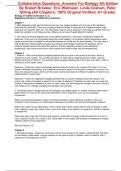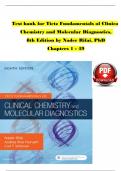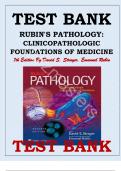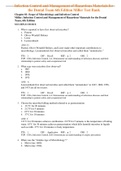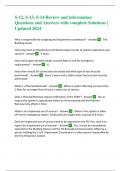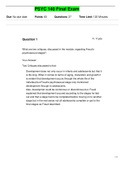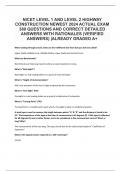Exam (elaborations)
Collaborative Questions Answers for Biology 5th Edition By Robert Brooker, Eric Widmaier, Linda Graham, Peter Stiling (All Chapters, 100% Original Verified, A+ Grade)
- Course
- Institution
This Is Original 5th Edition of Collaborative Questions AnswersFrom Original Author. All Other Files in the market are fake/old Edition. Other Sellers Have changed old Edition Number to new But Collaborative Questions Answers is old Edition. Collaborative Questions Answers for Biology 5th Editi...
[Show more]
